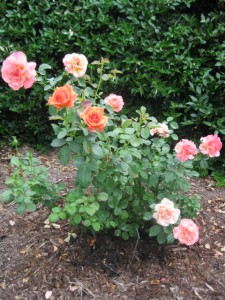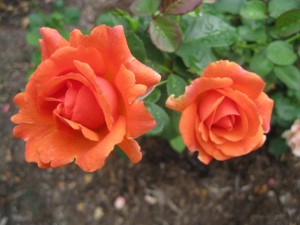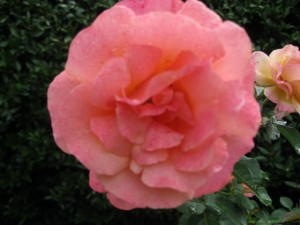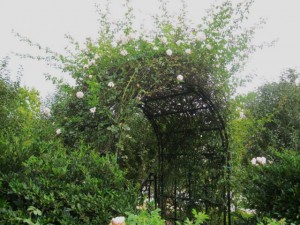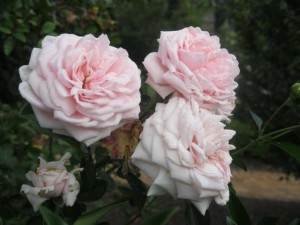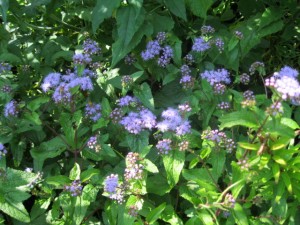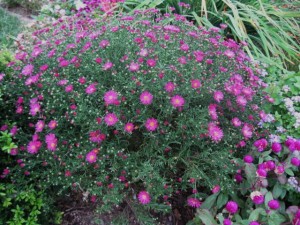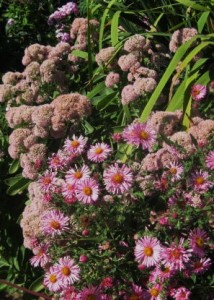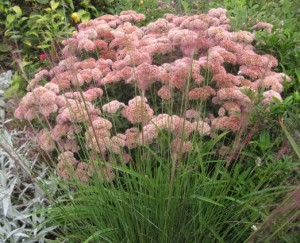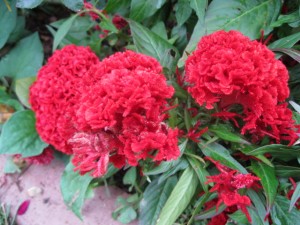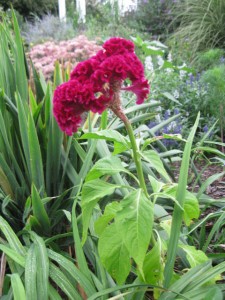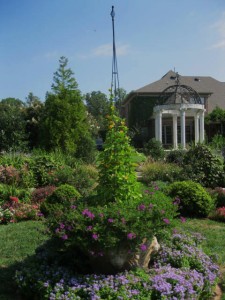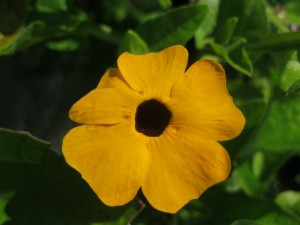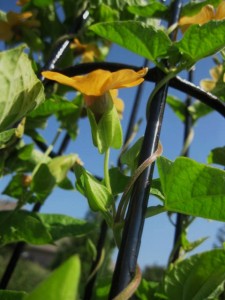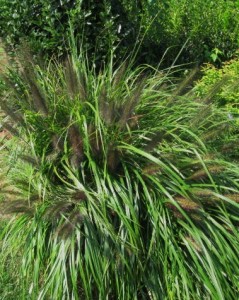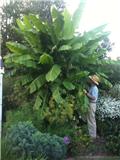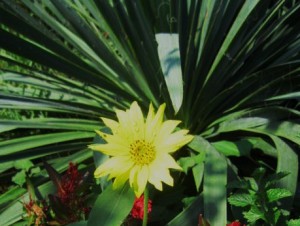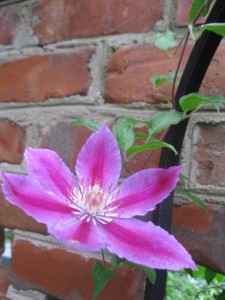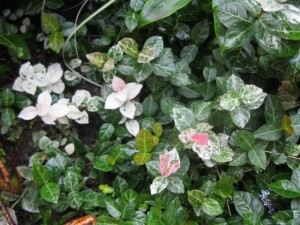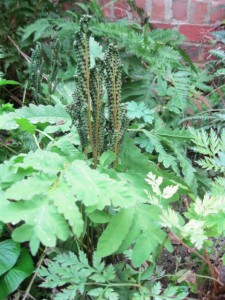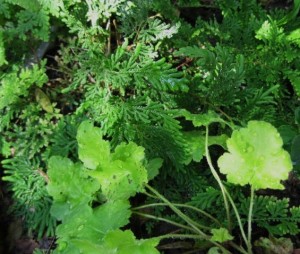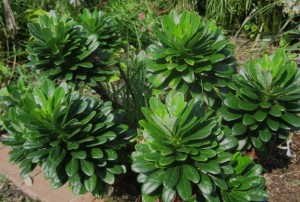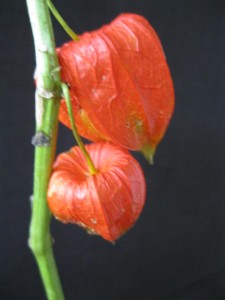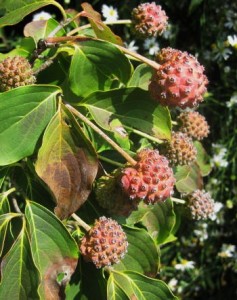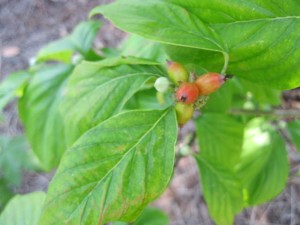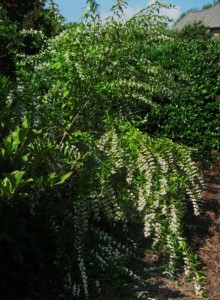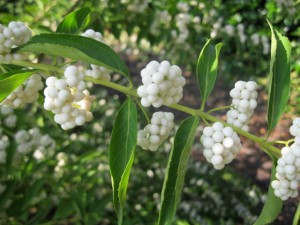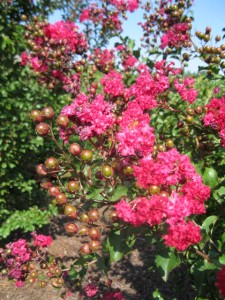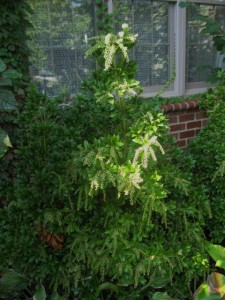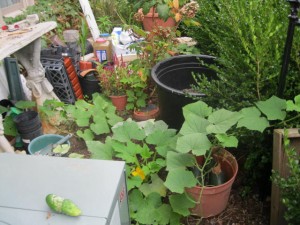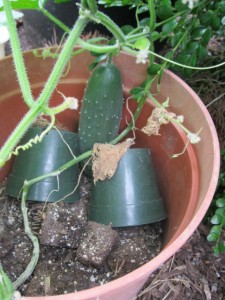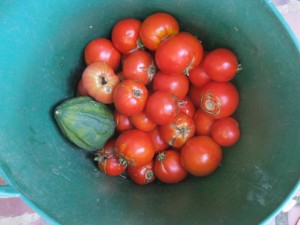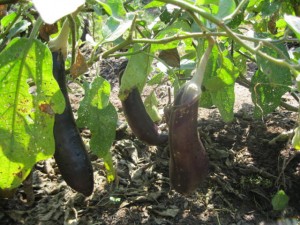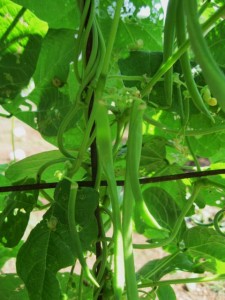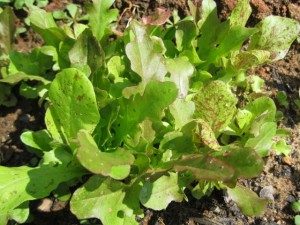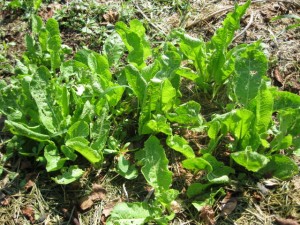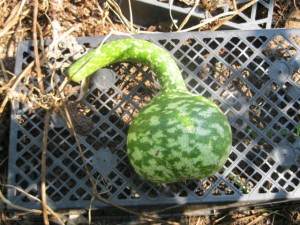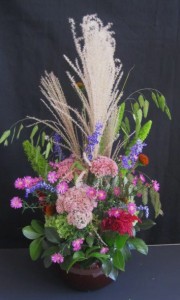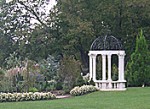
whole week of good weather! We had sunny days, warm temperatures, low humidity and some showers thrown in for good luck. Some mornings were down right chilly and I am not complaining one bit. I even got to wear a sweatshirt. The plants seem to be loving it and even ones that were looking poorly have perked up a little bit. Fall is definitely in the air even though some days have been in the 90s and red is creeping into leaves, berries are forming, and the color of many flowers is intensifying. What a wonderful time of year!
The roses are the plants that are most enjoying the weather. Many put out new growth and new intensely colored flowers. ‘Easy Does It’, a floribunda I bought this year, is blooming abundantly.
The flowers open a distinct orange color.
As the days go by the flower color slowly changes to a tropical blend of apricot, mango, and peach. And it is disease resistant too. No wonder it was an American Rose Society winner for 2010.
The climbing rose on the arbor of the front entrance to the rose garden is also loving the cool weather and has recently grown long canes and produced a lot of flowers. Look like it needs a haircut.
‘Awakening’ was bred from ‘New Dawn’ but has fuller flowers than its parent. It is fragrant and somewhat disease resistant.
The perennial ageratum is in full bloom. I cut it back a couple of times and it has come back with vigor but still grows too tall and flops. It also is a roamer but is a late bloomer so I forgive it for its faults.
Each week the New York asters get fuller with flowers. The pink is still ahead of the blue.
The New England aster ‘Alma Potschke’ is making an appearance and complements the pink of Sedum ‘Autumn Joy’.
But the sedum is also is enhanced when viewed through the see through flower stalks of purple muhly grass.
I have a fascination for odd looking plants and so included two different cockscomb celosia that look like brains; a scarlet one.
and a crimson one that is much taller but less floriferous.
The black-eyed-Susan vine surrounded by verbena is coming along but may never reach to top of the trellis.
As I was watering the pot today I noticed that the flowers do not have a solid center as I had assumed;
What you see as a dark center is actually the entrance to the long tube formed by the petals.
The black fountain grass likes the weather and has produced a lot of foxtails that protrude beyond the cascading foliage.
The head gardener is especially proud of his banana plant. It is a hardy banana but he bundles it up each winter and it comes back with gusto each spring. Needless to say it has thrived this year in the heat, humidity and rain, but still no bananas.
This small volunteer sunflower appeared suddenly in front of a yucca; it picked a pretty good companion for a backdrop.
The clematis ‘Dr. Ruppel’ has suffered from the heat but has produced a fine looking flower that I hope indicates that it will recover enough to return next year.
The color of the leaves of snow-n-summer, Trachelospermum asiaticum, is developing and filling the area with pink and white.
The interrupted fern is pushing up its spore-bearing structures. We collected it from our farm in New Jersey and it has thrived here to the extent that I am digging it out and moving it to more challenging garden beds.
I rescued this little guy from the shade a large vine growing behind it. He is salaginella, a primtive plant I found in Home Depot in Atlanta. It is considered a fern ally and produces spores but no flowers or seeds. He grows happily now with heuchera ‘Key Lime Pie’.
Another plant I rescued from thugs is the euphorbia, a gift from a friend. It was somewhat overpowered by the Chinese lantern plants I had dumped behind it last fall in a desperate attempt to find a place for the winter. Fortunately, the euphorbia is tough and withstood the competition. The foliage is magnificent!
The Chinese lanterns were a disappointment and yielded some lanterns but were so crowed only a few ripened to their full potential.
Many plants have ripening berries; the ones on the Kousa dogwoods are probably the largest.
The common dogwood is also producing ripe berries but they are tiny in comparison.
The beautyberry bush (Calicarpa) is huge and bears hundreds of white berries.
The berries are borne in clusters on arching stems and look terrific in flower arrangements.
The crape myrtle is still bearing flowers as its berries ripen.
The andromeda are producing flower buds for next year.
The next picture looks like a mistake; it is a picture of a corner of the area where I pot up plants, take cuttings, and plant seeds. Last spring I was sorting through my seeds packs and apparently dropped some cucumber seeds. I have watched them slowly growing, sure that they would never produce fruit because the area is so shady.
I was wrong and sitting in a bucked of potting soil was this large cucumber. Another smaller one was growing under the potting bench. I have already eaten them and they were delicious!
We are still harvesting tomatoes by the buckets but the end is in sight. We also found our last acorn squash hiding in a bush.
Those eggplant flowers I showed a while back have finally produced fruit and we are going to drown in eggplants.
When the rabbits and then the bugs attached our beans I thought all was lost but they have come back and are happily producing beans.
The first clump of musclun is up and edible but we will have to wait a while before we have enough to harvest.
The head gardener’s horseradish completely died down in the heat but is coming up all over now that cooler weather is here.
The head gardener also decided to plant fancy gourds and they are lying on racks in the garden ripening until the vines die away.
A couple of gals and I made an arrangement using materials from our gardens for our garden club meeting. It was a fun project and appreciated by the other members.
I look forward more signs of fall; the beautiful colors of autumn leaves and the brisk weather that creates them.

